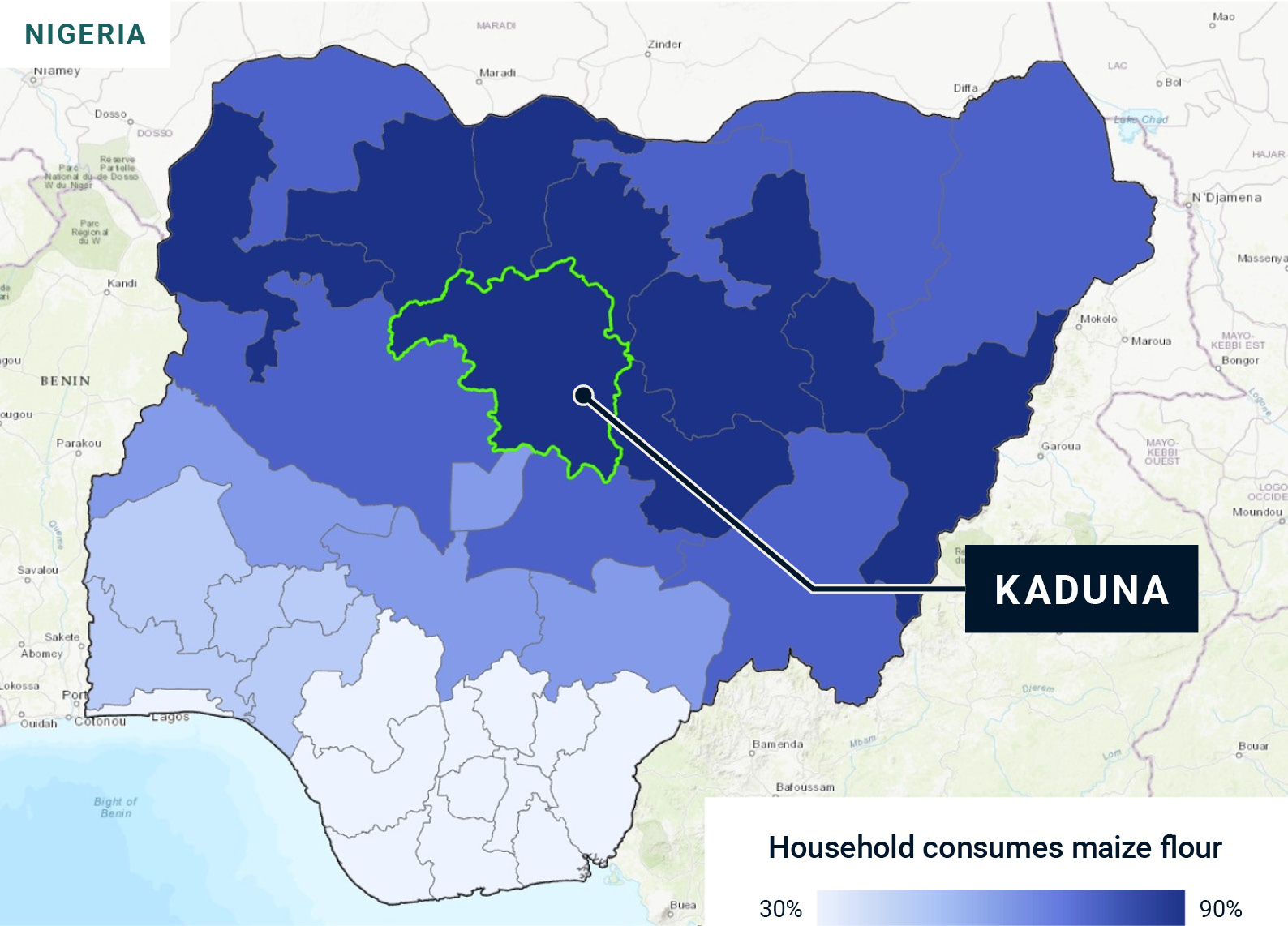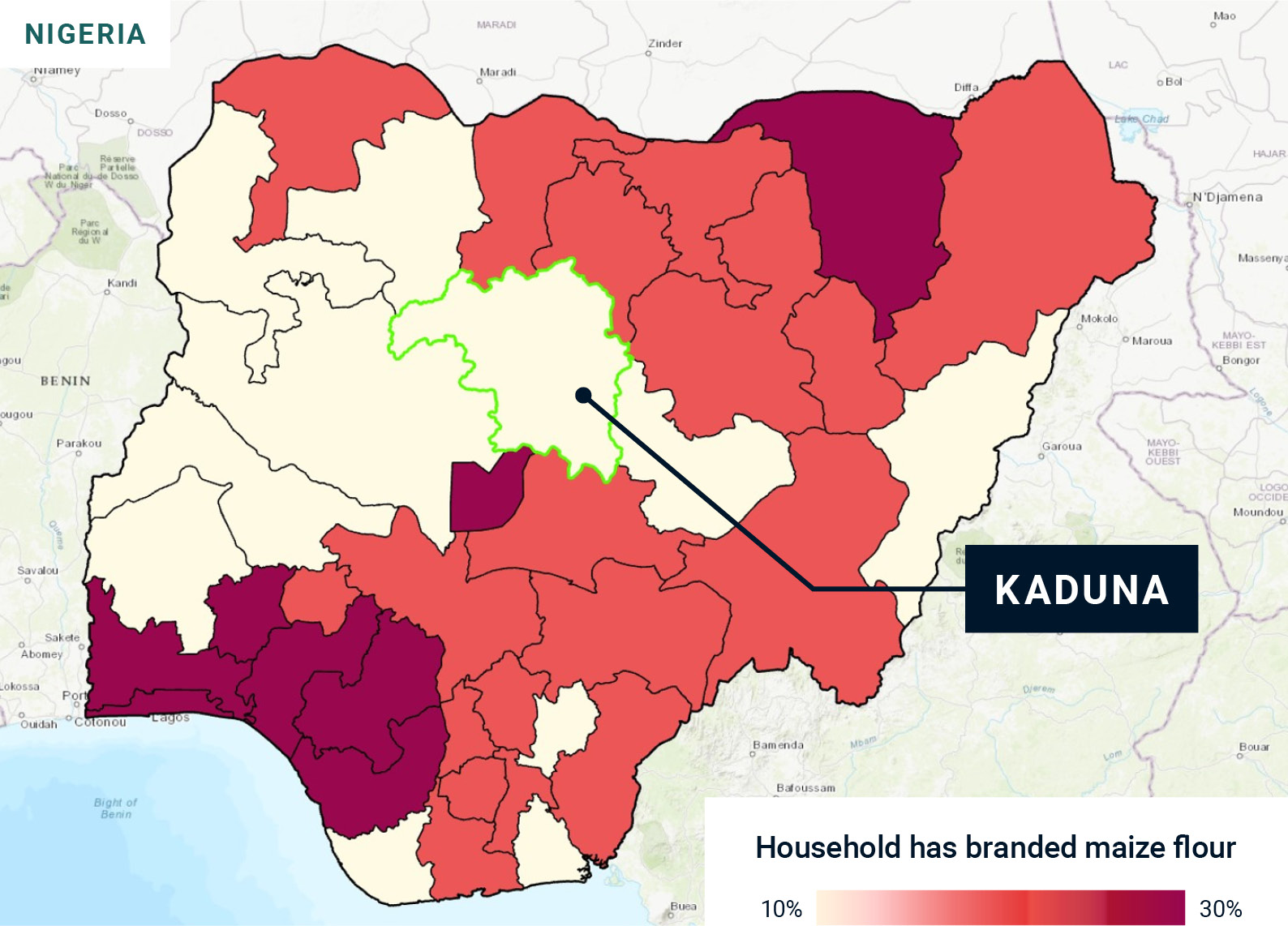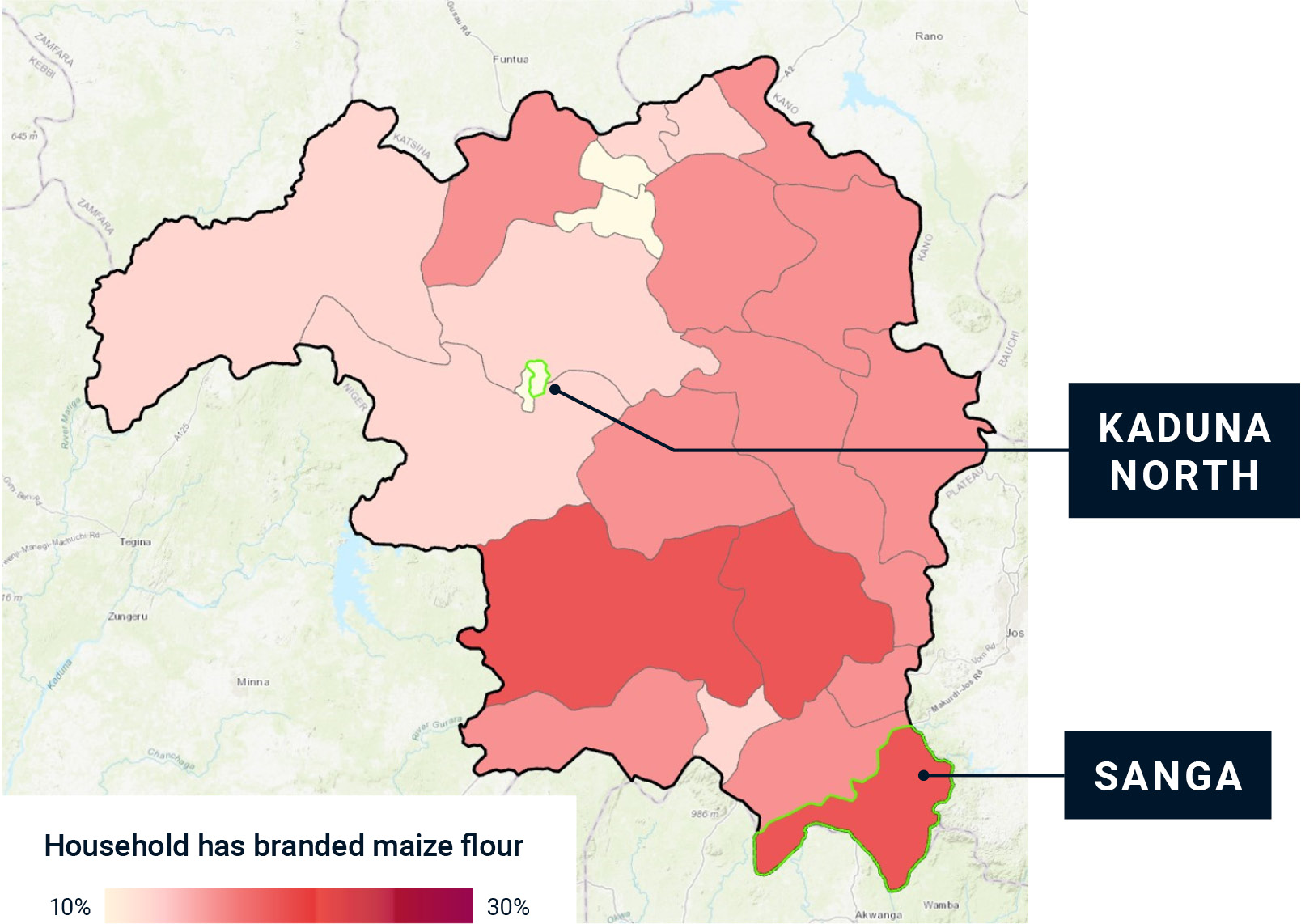Announcing Fraym’s New Program: Proxy Measurement of Fortified Food Coverage in Nigeria and Ethiopia


The Challenge
Although around 80% of households in Kaduna consume maize flour, only 17% consume a branded fortifiable version.
Over the past few decades, many countries have introduced mandatory fortification of certain industrially-produced staple foods to ensure people are getting the basic nutrients they need to avoid undernutrition and malnutrition. For example, maize flour has had national mandatory fortification status in Nigeria since 2010. Even with mandatory fortification, fortification standards are often unmet in locally produced, unpackaged, and homemade maize flour.
To understand who is covered through Nigeria’s large-scale fortification of maize flour, we can look at which households are consuming national brands and what are the drivers of their purchasing and consumption decisions. Although most household fortification coverage data is only available at the national or geopolitical zone, Fraym produces coverage data at a much more granular level.
Below is a map of maize flour consumption in Nigeria.

We can see that maize flour consumption is much more prevalent in the north of the country than in the south. Suppose we want to focus on a state with relatively high maize flour consumption. In Kaduna, 83% of households consume maize flour compared to the national average of 57%.
Next, we look at household coverage of industrially-produced branded maize flour that is likely to be fortified. At the state level, Kaduna has a relatively low proportion of households that consume branded maize flour. Although this is useful information, Fraym data allows us to go several steps further to identify which LGAs have lower than average coverage, and which LGAs have higher coverage than we might expect.
What’s driving these differences?

Kaduna North contains Kaduna city, the capital of Kaduna and a relatively large, cosmopolitan city, while Sanga is a much less urban and sparsely populated LGA. However, only around 10% of people who consume maize flour in Kaduna North have branded maize flour, while 21% have branded maize flour in Sanga – this is compared to the state average of 17%.

What is driving coverage?
To understand what may be driving lower than average branded maize flour coverage in Kaduna North and higher than average branded maize flour coverage in Sanga, we can look at elements of the Fortified Food Access Index.
Sanga’s higher coverage is associated with a higher Agency Score than both Kaduna North and the state and national averages. Since Sanga has lower scores for Availability and Affordability, it may be the case that women’s decision-making is driving higher coverage.
We can then inspect the indicators of the Agency component of the index to see that Sanga has a higher rate of female-headed households and women are much more likely to plan meals, do the household shopping, and control any income they make.


Understanding the drivers of branded food coverage can also help policymakers decide the most appropriate action to take to improve uptake at any administrative or geographic level.
To learn more or connect with the team, email Melissa Persaud at [email protected].